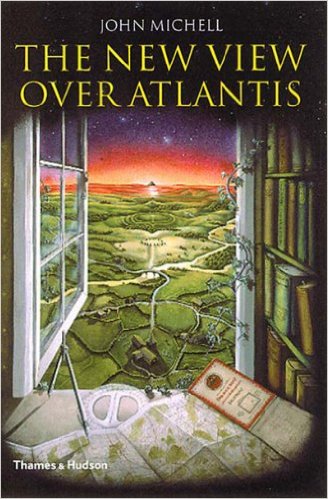alternative viewpoints
Let's face it, the traditional archeological descriptions can be a bit dry. If nothing else many of the alternative approaches make for a cracking good read. Naturally some alternative views are pure speculation and some border on total lunacy but many of today's established ideas were once fringe concepts. Sorting the wheat from the chaff is up to the reader's discrimination.
Many alternative viewpoints seek to fill in the yawning gaps where our knowledge of what the stones were used for and how they were erected. Often they rely on non-physical or non-measurable phenomena, anathema to the objective scientific tradition. Some simply draw conclusions which traditionalists feel can be explained in other ways It's for you to decide....
Archaeo-astronomy
is based on the reasonable premise that the movements of heavenly bodies was important to our prehistoric ancestors, both as a way to keep track of the seasons for agriculture.
There are examples of clear astronomical alignments - for instance the passageway of Newgrange, Ireland, is built so that the sun illuminates the chamber only at the midwinter sunrise.
Many other alignments are possible - with the northermost and southernmost moonrises and moonsets, and some star groups. The moon has a complex movement which only exactly repeats over a cycle of 18.6 years, though the normal lunar cycle repeats about once a month.
Stellar alignments have changed slightly over the years since megalithic sites were raised, this naturally needs to be allowed for, so some alignments with stars will no longer hold. Professor Alexander Thom was one of the leading exponents of archeaoastronomy, building on some of the earlier work done by Sir Norman Lockyer around 1900 (Lockyer was founder of the journal 'Nature').
Archaeologists tend to view some celestial alignments with suspicion, partly because to study the moon over 18.6 years implies considerable free time to think and observe, which does not fit in with the perception of Stone Age Man, and without writing it would be difficult to transmit the ideas along the generations or across communities.
Earth Mysteries
Earth Mysteries is an umbrella term including fringe ideas about what went on at ancient sites, and their purpose. But it also includes the subjective experience of being at prehistoric sites, dowsing, UFOs, and various products of occultism such a Frederick Bligh-Bond's use of automatic writing to find the Edgar Chapel in the excavation of Glastonbury Abbey. One of the leitmotifs of Earth Mysteries was the idea of ley lines connecting prehistoric sites and historic sites like churches often built over prehistoric sites.
Ley lines were deceptively attractive, networks of ancient energy linking sites older than history, still performing some unknown service.
Imagine looking out across the countryside. You see first one ancient site, and others - all in a straight line... Ley-lines are long straight tracks joining places of ancient power - or a modern-day mental projection of networks onto the landscape, depending on your viewpoint.
'A chance visit to Blackwardine caused him to look at the map for features of interest. [...] He noticed on the map a straight line that passed over hilltops through variousl points of interest and these points were all ancient. Then without warning it all happened suddenly. His mind was flooded with a rush of images forming one coherent plan. The scales fell from his eyes and he saw that over many long years of prehistory, all trackways were in straight lines marked out be experts on a sighting system. The whole plan of The Old Straight Track stood suddely revealed... 'The whole thing came to me in a flash' Alfred Watkins, The Ley Hunters Manual
The idea has a mystical attraction all of its own - the concept of the landscape united by an invisible grid of connections, revealed only by the clustering of significant points placed by Man through the ages - standing stones, old way markers, churches, which are often placed over sites revered by earlier folk. Look over the landscape from a vantage point, and where you see markers like stones and churches line up, you can almost see the lines in a faint ethereal haze joining them up.

The book cover from John Michell's "New View over Atlantis" gives a feel of the ley-line vision
Is it merely pareidolia, your mind seeking to impose a pattern on an unpatterned landscape? Are these lines joining several sites in a row the last vestiges of the trackways established using sighting poles and hilltop fires by the 'dod-men' of old whose job it was to establish the first communications links through the prehistoric landscape...
I have always had a soft spot for this as this was a hot topic among Earth Mysteries books when I first came to wonder at standing stones. Mentioning ley-lines is not the way to get into archaeologists' parties :-).
I enjoyed the romance of the idea, so much that there's more on ley lines as ethereal networks of energy connecting stones. It's an idea that was probably of its time.